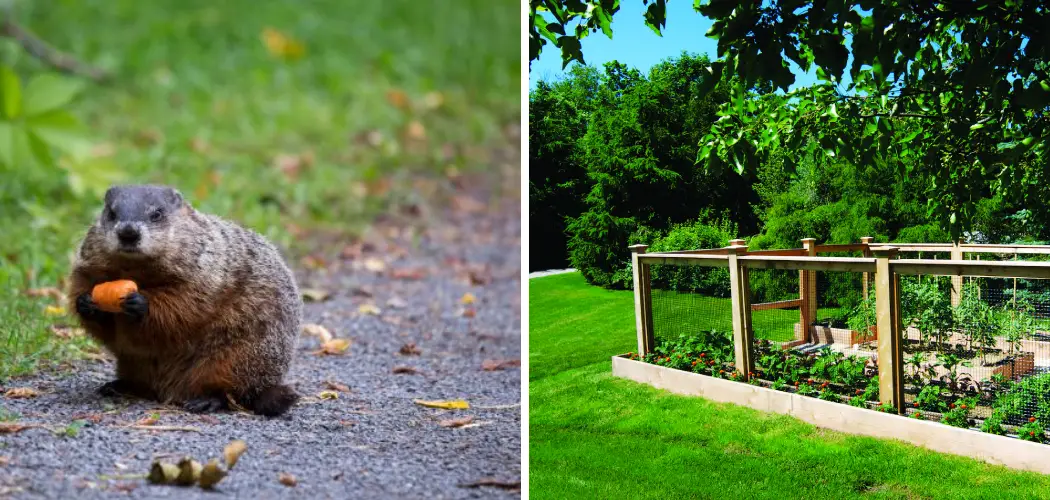Raised garden beds are a great way to get the most out of your gardening by allowing you to control soil types, nutrient levels, and water drainage. You must know how to keep groundhogs out of raised garden beds.
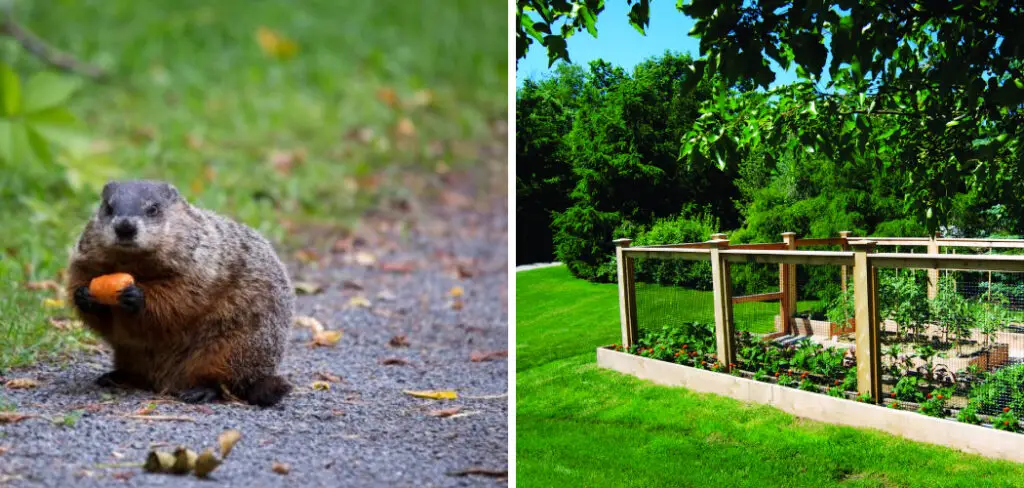
However, if you live in an area with groundhogs they can quickly become unwelcome pests in your garden.
Groundhogs love to eat the produce from raised gardens as much as humans do and they love to dig holes that could damage your plants’ root systems. In this blog post, we will discuss some tips on how to keep these burrowing critters out of your raised garden so that you can enjoy growing fresh fruits and vegetables without any unwanted visitors!
Tools You Will Need
- Chicken wire
- Hot sauce
- Groundhog repellent
- Motion-activated sprinklers
6 Steps Guide on How to Keep Groundhogs Out of Raised Garden Beds
1. Install a Fence
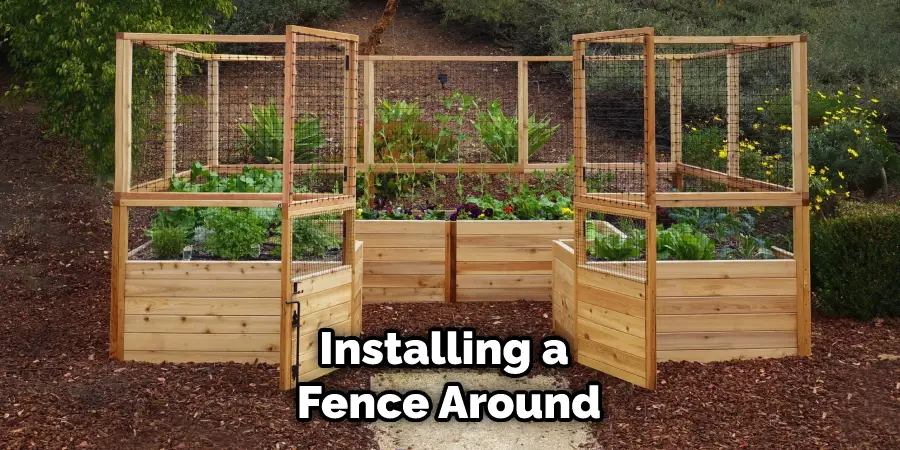
Installing a fence around your raised garden beds can be an excellent way to keep groundhogs away. Not only do they provide sturdy protection, but also they add an extra level of attractiveness to your garden. Fences come in a variety of materials and heights, so you’ll want to research which will best suit your needs.
If wood is the material of choice, pressure-treated wood is preferred because it offers the highest levels of strength and durability. For taller fences, consider installing metal posts since they are sturdier than wooden ones and can support more weight.
Set up your fence in such a way that there’s no space for groundhogs to sneak underneath or between the panels.
If needed, reinforce the fence with additional pieces of netting or fabric that are designed to keep animals out of gardens. With these steps in place, you’ll have a secure and attractive garden that will be safe from pesky groundhogs this summer!
2. Use Groundhog Repellents
Raised garden beds are a great addition to any yard or garden and can be a great way to grow more produce in a smaller area. However, they can also become a great habitat for groundhogs who are looking to feast on the fruits of your hard work.
To keep groundhogs away from your raised garden beds, it is important to use groundhog repellents around the perimeter of the bed.
Repellents such as ammonia-soaked rags and commercially available options can be effective at blocking groundhogs out. Additionally, spending some extra time to build your raised garden beds with sturdy materials and bury hardware cloth around their perimeters can help stop groundhogs from gaining entry into your prized gardens.
3. Keep the Area Clean
Keeping the area around your raised garden beds neat is an important step to help keep groundhogs away. Groundhogs are easily attracted by inviting piles of leaves and tall grass, so if you don’t want them around, you should make sure to regularly clean your beds.
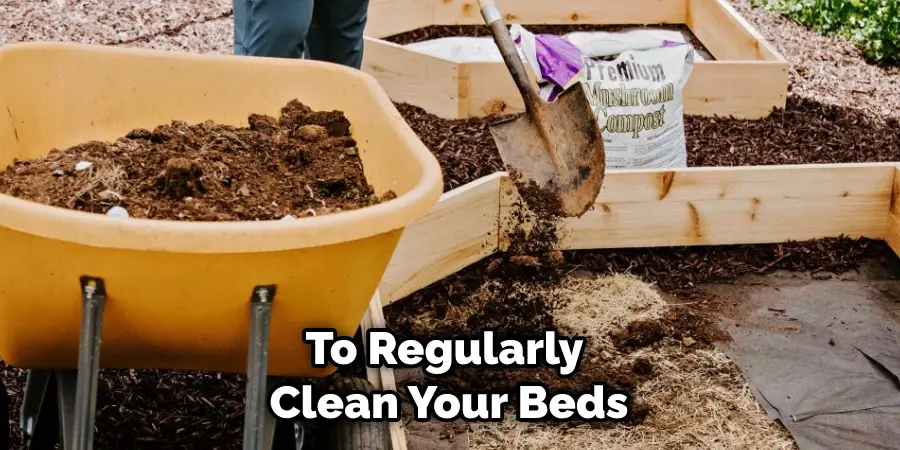
Additionally, cutting off trees and shrubs that are close to the garden can help deprive them of shelter and discourage them from sticking around.
Groundhogs will also stay away with a bit of scent-based protection.
Try sprinkling predator urine or powdered predator scat into the surrounding area; the smells may be too off-putting for the groundhogs in search of a snack from your garden bed! Ultimately, keeping the environment around your raised garden beds clean provides an easy deterrent for troublesome groundhogs.
4. Set Up Motion-Activated Sprinklers
If you are looking for an effective way to thwart groundhogs from invading your raised garden beds, consider setting up motion-activated sprinklers. This method is a great way to scare away groundhogs without having to harm them in any way.
Motion-activated sprinklers can detect movement within a certain range and will turn on automatically when the groundhog enters that area.
Not only are these sprinklers effective in deterrence, but they also come with a variety of features such as adjustable distance detection range, night sensing capabilities, and adjustable water flow rate.
Installing motion-activated sprinklers around the perimeter of your raised garden beds is an excellent line of defense against pesky groundhogs.
5. Set Live Traps
Groundhogs are a common garden pest, easily capable of destroying a well-tended garden bed in one afternoon. If you face this problem, setting live traps is an effective solution. Humanely trapping the groundhogs and then releasing them somewhere away from your garden will stop them from doing any more damage to your crops.
To keep the groundhogs from coming back, however, you must fill their burrow entrances with buckets full of dirt so that the critters can’t reclaim their home. You may also benefit from keeping a border of rocks around your raised beds — groundhogs adore fresh vegetables but they can rarely scale over a bank of stones.
With these tactics in place, you can happily enjoy your garden’s bounty without having to worry about voracious varmints eating it first!
6. Plant Groundhog-Repellent Plants
If you have raised garden beds, groundhogs can be a real problem. Understandably, nobody wants to deal with their veggies getting eaten by pesky animals. To prevent these rodents from sniffing around your edible plants, try planting some groundhog-repellent plants in between the main garden.
Certain fragrant flowers such as marigolds and garlic are known to repel animals like groundhogs. Sage is also an excellent option for keeping them away; its smell is believed to ward off several forms of wildlife.
This form of natural pest control may help keep the critters out of your garden. Planting these types of plants around the perimeter will create a barrier that will make them think twice before approaching your veggie patch!
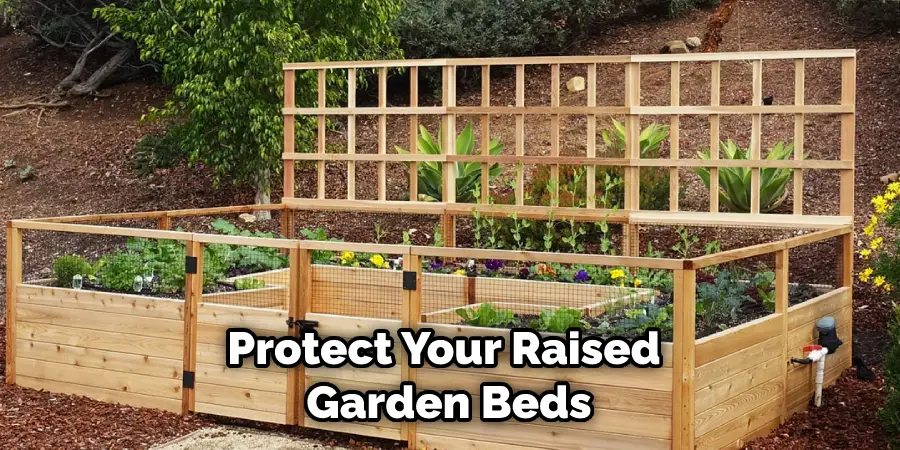
Following these steps can help you protect your raised garden beds from groundhogs and keep them out of your garden. With a few simple precautions, you’ll be able to enjoy the fruits (and vegetables!) of your labor without any unwanted burrowing visitors!
Tips to Keep Groundhogs Out of Raised Garden Beds
- Groundhogs, also known as woodchucks, are a type of rodent that is native to North America.
- These animals typically weigh between 4 and 10 pounds and measure between 16 and 26 inches in length.
- Groundhogs are proficient diggers and can tunnel underground at a rate of 3 to 4 feet per minute.
- These animals are most active during the day and typically hibernate during the winter months.
- Groundhogs are omnivorous and their diet consists of plants, fruits, vegetables, insects, and small mammals.
- Groundhogs often build their burrows near sources of food, such as gardens or farms.
- These animals can cause significant damage to crops and gardens by eating plants or digging holes.
- Fencing is perhaps the most effective method of keeping groundhogs out of raised garden beds, as it will prevent them from being able to access the area altogether.
- Trapping is another option for getting rid of groundhogs, but it should only be done by someone who is experienced in doing so.
How to Protect Your Raised Garden Beds from Groundhogs?
Raised garden beds are popular for their efficiency and space-saving design, but they can be vulnerable to groundhogs. The first step in protecting your raised garden beds is to line the bottom with a heavy-duty fabric if possible, as it will help stop groundhogs from digging into your garden.
Also, keep weeds away from the perimeter of your beds by regularly trimming and removing any that appear in adjacent areas. To further deter groundhogs, consider surrounding each bed with chicken wire fencing and inserting some rustling objects near entryways – like coffee cans filled with pebbles or wind chimes.
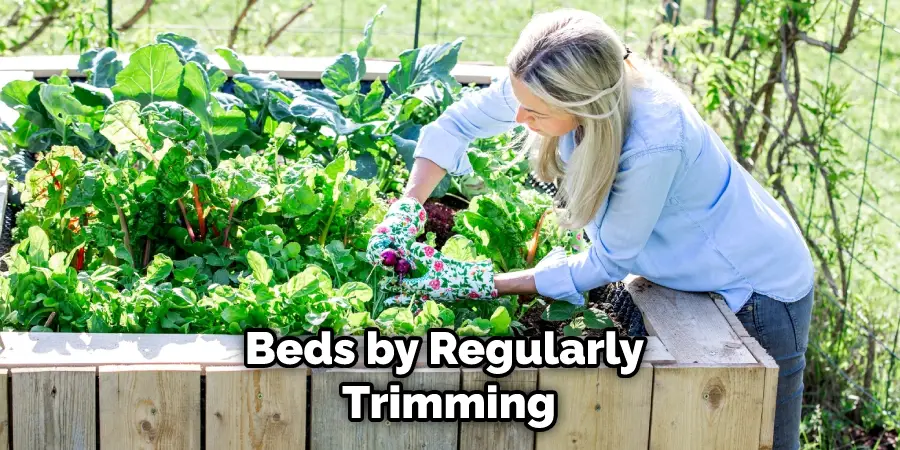
Lastly, don’t forget to keep an eye out for damage caused by these furry marauders so you can make quick repairs when necessary!
How to Keep Groundhogs Away from Your Vegetable Patch?
Keeping groundhogs away from your vegetable patch is essential for a successful harvest. Repellents like human hair, cayenne pepper, and garlic powder may be effective for a short amount of time, though the most surefire way to keep groundhogs at bay is to exclude them from their favorite food sources.
Remove piles of wood, brush, or other debris where they like to hide during daylight hours.
Move bird feeders away from the patch as well; groundhogs love to munch on seeds and suet! Additionally, you can construct a fence at least three feet high around your vegetables. Use poultry wire and make sure it extends several inches underground to prevent those clever critters from digging underneath.
Groundhogs can cause considerable damage to crops — with these steps, you’ll have peace of mind that yours are safe!
Conclusion
Although groundhogs can be challenging to keep out of raised garden beds, there are a few things you can do to deter them. You should carefully determine how to keep groundhogs out of raised garden beds.
Try using chicken wire around the perimeter of your bed, and make sure to keep the area around your bed free of debris where they might build their burrows.
You can also try setting up a motion-activated sprinkler system to startle them when they approach. Finally, remember that persistence is key – it may take some trial and error to find what works best for keeping groundhogs out of your garden beds.
About
Outdoor Fixes is a distinguished figure in the world of Diy design, with a decade of expertise creating innovative and sustainable Diy solutions.
His professional focus lies in merging traditional craftsmanship with modern manufacturing techniques,
fostering designs that are both practical and environmentally conscious. As the author of diy,
outdoorfixes delves into the art and science of outdoorfixes-making, inspiring artisans and industry professionals alike.
Education RMIT University
(Melbourne, Australia) Associate Degree in Design (Outdoor Fixes) Focus on sustainable design, industry-driven projects,
and practical craftsmanship. Gained hands-on experience with traditional and digital manufacturing tools, such as CAD and CNC software.
Nottingham Trent University
(United Kingdom) Bachelor’s in outdoorfixes.com and Product Design (Honors) Specialized in product design with a focus on blending creativity with production
techniques. Participated in industry projects, working with companies like John Lewis and Vitsoe to gain real-world insights.
Publications and Impact
In diy, Outdoor Fixes his insights on indoor design processes, materials, and strategies for efficient production.
His writing bridges the gap between artisan knowledge and modern industry needs, making it a must-read for both budding designers and seasoned professionals.

